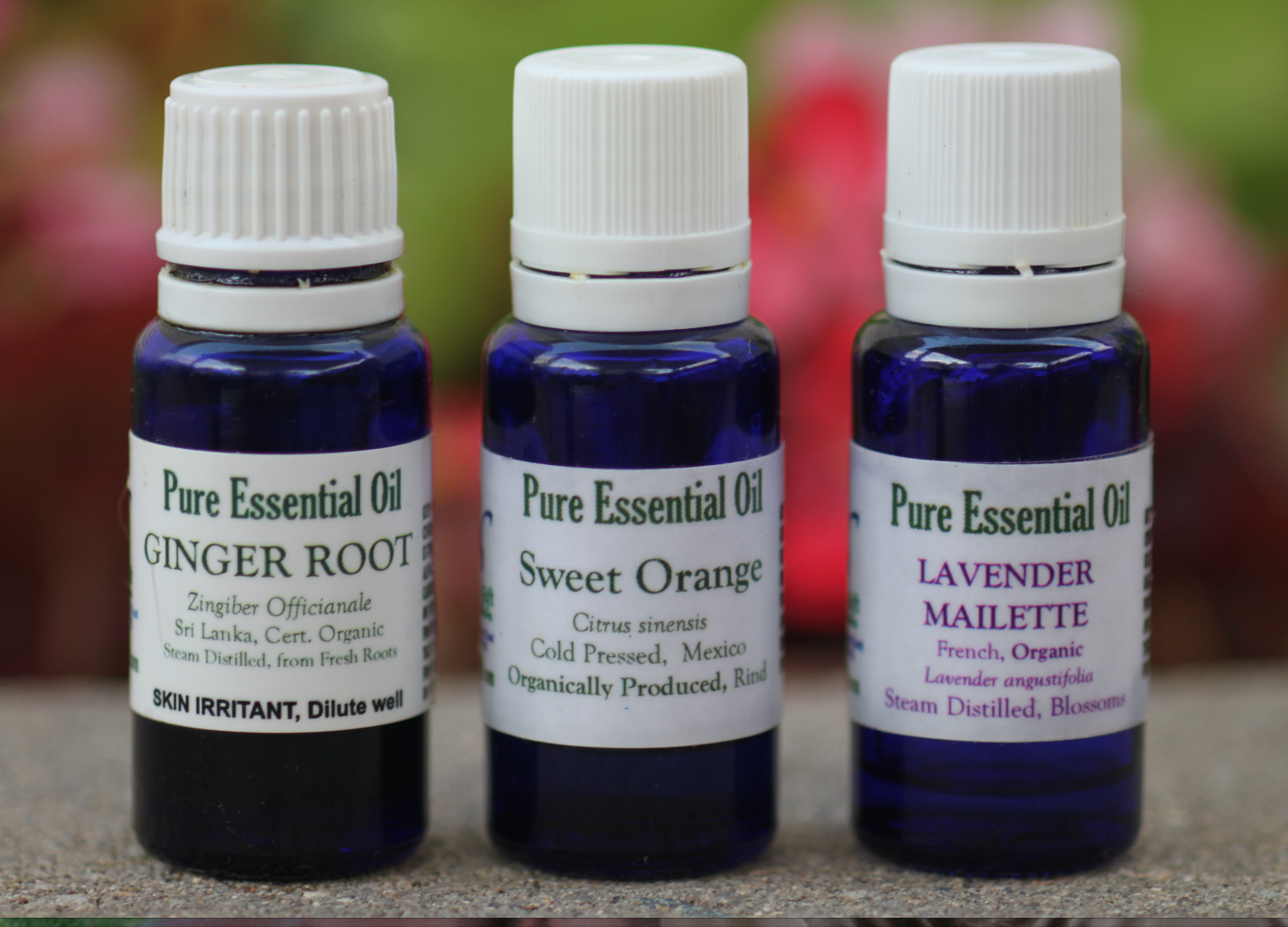
Aromatherapy Can Enhance Health & Healing
“Aromatherapy Can Enhance Health & Healing:
Essential Oils Have Been Used Since Time Immemorial.”
By Emmy Vadnais, OTR/L
The Egyptians seem to be the first people to extensively make use of aromatherapy and aromatic herbs by using it in their religious practices, perfumes, cosmetics, physical and psychological medicine, and embalming and mummification processes dating back to 3,500 B.C. The Chinese also made use of herbs and aromatic plants that became an integral part of the Indian Ayurvedic healing system.The Greeks and Romans absorbed medicinal wisdom from the Egyptians. One of the most well-known physicians of that time, Hippocrates, is known to have said, “The way to health is to have an aromatic bath and a scented massage every day.”

Many aromatic herbs were used in the 14th Century to combat the Black Death. Herbs were burned both inside death houses and outside to purify the air. Lavender was notable for its antiseptic, anti-viral, and anti-bacterial properties, and was used to sanitize at that time, as was pine, frankincense, rosemary, and hops. Noteworthy physician Paracelsus (Phillipus Aureolus Theophrastus Bombastus von Hohenheim, 1493-1541), believed to be the first to use the terms zinc, gas, chemistry, and alcohol, had great success treating leprosy.
French perfumer and chemist Rene-Maurice Gattefosse coined the term “aromatherapie” in 1937. His book Gattefosse’s Aromatherapy contains early clinical findings for utilizing essential oils for a range of physiological ailments. In 1910, Gattefosse burned his hand badly in his laboratory, and it being the first available compound handy, treated it with pure undiluted lavender oil. It immediately eased the pain, and helped heal the hand without any sign of infection or scar. He used lavender in many experiments for skin repair and healing. During World War I, he used lavender, lemon, thyme and clove to help heal the wounds of soldiers, eliminating infection and reducing scar tissue.
In the 1950s, Marguerite Maury, a nurse and biochemist, started diluting essential oils in a vegetable carrier oil and using them with massage therapy. Since the 1970s the use of essential oils and aromatherapy has become a major part of holistic health care systems, and has a large following throughout the world.

How Aromatherapy Can Be Used
Our sense of smell is 10,000 times more sensitive than any of our other senses. The olfactory system connects directly to the brain, and is the only place where the central nervous system is directly exposed to the environment. Aromas enter the nose and travel to the olfactory bulb sensory receptors that are a part of the brain. This sends messages to the limbic system, where scent influences mood, emotions, and memories, and to the neocortex, where they can affect brainwave activity and modify conscious thought.
There are several ways to receive the benefits of essential oils. They can be inhaled, applied topically to the skin, and are a part of foods, spices, and some herbs, supplements, and medications. There is some controversy about ingesting essential oils orally neat, as the plant concentrations are so high, and only a little may be needed. It may be better to ingest them in their natural form from the whole food.
The aroma can be inhaled by wafting the bottle about six inches under the nose, by placing a few drops on a cotton ball, through a diffuser that places the aroma into the air, or by a spritzer that is a combination of water and essential oil in a spray bottle that is misted into the air.
Combining essential oils with a carrier oil and applying them during massage therapy, reflexology, and acupressure is a wonderful way to receive the benefits of aromatherapy. A bath or foot bath with a half-cup mixture of baking soda, or sea or Epsom salts, in equal parts with a few drops of essential oil can help a person relax, lift fatigue, calm sore muscles, and deliver other benefits. A carrier oil is not necessary, as the salt or baking soda acts as the carrier.
Our skin is our largest organ and absorbs 60% of what we put it on it. Essential oils applied topically are absorbed through the skin, and may be more readily absorbed from skin locations with greater concentrations of sweat glands and hair follicles, such as the head, soles of feet, palms of hands, genitals, and underarms.
When using a carrier oil, it is usually recommended to use 1-12 drops per ounce of carrier, such as jojoba oil, sweet almond oil or coconut oil.
It is best to do a skin patch test first:

• Mix 1 drop of the oil you wish to test with a teaspoon (5 ml) of carrier, such as jojoba, sweet almond oil, or coconut oil.
• Apply a small amount of the solution to the inside of your wrist or elbow and cover with a Band-aid for 24 hours without washing this area.
• If no sign of itching, redness or swelling occurs after the 24-hour period, it should be safe for you to use the oil. If irritation occurs, wash with mild soap and water.
• If you have never used any form of carrier oil on your skin, it is best to first do a skin patch test using only the carrier oil.
Benefits of Aromatherapy
Research studies show that aromatherapy has positive effects such as relaxation, calming, lowering anxiety, pain, and depression, boosting moods and emotions, decreasing symptoms of trauma, tumors, infections, premenstrual syndrome, and nausea, and improving alertness, memory, sleep, and quality of life, among other benefits.
Aromatherapy can enhance Activities of Daily Living participation. For example, communication skills in children with autism improved when lavender was diffused in the room. The children had an increase in calming, attention span, concentration, activity participation, eye contact, and consistency in communication.
Another study found that people with dementia who received lavender, geranium, and mandarin in almond carrier oil increased alertness, contentment, and sleeping at night, and reduced agitation, withdrawal, and wandering. Essential oils such as ylang ylang showed a decrease in disturbing behaviors, and they were then prescribed fewer medications. People with dementia may have less of a sense of smell. However, they seemed to benefit from it being applied topically to their skin, with decreased agitation and lowering of depression.

Rosemary has been found to enhance long-term memory, alertness, and mental arithmetic, and to enhance prospective memory, which involves the ability to remember events that will happen in the future and to remember to complete tasks at particular times, such as when to send a birthday card or take medications.
Safety and Precautions
It is essential to know safety and precautions when using aromatherapy; for example, to prevent drug interactions with certain medications. Robert Tisserand, a leading aromatherapy expert, wrote the book Essential Oil Safety: A Guide for Health Care Professionals.
It is generally advised to avoid oils in the first trimester of pregnancy. Children and older adults benefit from less essential oil in the solution. Be aware of which essential oils may cause photosensitivity and avoid sun exposure. A Material Safety Data Sheet is a necessary document to have in a facility that uses aromatherapy.
How to Get Started with Aromatherapy
Aromatherapy is a large topic and many volumes of books have been written about it. To familiarize yourself with aromatherapy and essential oils, consider reading books, go online, take a class, or consult with an aromatherapist or a practitioner who is trained in and has experience with aromatherapy. Consider purchasing a few bottles of essential oils to begin playing with and receiving the benefits of the wonderful world of aromatherapy. When you are more comfortable and confident, you can begin integrating it into your practice.
There is a beautiful array of over 400 essential oils available. Seven essential oils that can be relaxing or calming are lavender, orange, chamomile, ylang ylang, cedarwood, sandalwood, and rose. Seven essential oils that can be energizing, improve alertness, or lift fatigue are peppermint, rosemary, juniper, ginger, grapefruit, lemon, and lime.
Nature’s Gift provides straightforward information on how to get started with aromatherapy at https://www.naturesgift.com/aromatherapy-information/what-is-aromatherapy/how-do-i-start/. Here are some tips on how to buy essential oils from AromaWeb: www.aromaweb.com/articles/howtobuyessentialoils.asp.

Other resources include:
Alliance of Interntional Aromatherapists:www.alliance-aromatherapists.org
AromaWeb: www.aromaweb.com
National Association for Holistic Aromatherapy:https://www.naha.org
Nature’s Gift Aromatherapy and Products:https://www.naturesgift.com
Robert Tisserand: http://roberttisserand.com
References
Aromatherapy Safety-Drug Interactions. Retrieved from http://naturesgiftaromatherapy.blogspot.com/2013/09/safety-drug-interactions.html#ixzz3fyKXjket
Effects of Aromatherapy on Communication Skills in Children with Autism. Retrieved fromwww.academia.edu/4742012/Effects_of_aromatherapy_on_communication_skills_in_children_with_autism
Essential Oil Skin Patch Test. Retrieved from www.aromaweb.com/articles/essential-oil-skin-patch-test.asp
Essential Oils: What Are They? Retrieved from http://roberttisserand.com/about/essential-oils/
Herbalism: Herbs & Herbal Medicine Cures. Retrieved from www.disabled-world.com/medical/alternative/herbal/
The History of Essential Oils and Aromatherapy. Retrieved from www.essentialoils.co.za/history-essential-oils.htm
How Do Essential Oils Work? Retrieved from www.takingcharge.csh.umn.edu/explore-healing-practices/aromatherapy/how-do-essential-oils-work
Paracelsus: physician and alchemist. Retrieved from http://hektoeninternational.org/index.php?option=com_content&view=article&id=737%3Aparacelsus-physician-and-alchemist&catid=61&Itemid=730
The Sense of Smell: A Powerful Sense. Retrieved from https://www.tsbvi.edu/seehear/summer05/smell.htm
Vadnais, E. (Producer & Speaker) & Berns-Morris, B. (Speaker). (2014, March 11) Holistic OT Conversation: How Aromatherapy Can Enhance OT Practice (Audio Recoding). Retrieved from http://holisticot.org/service/aromatherapy-march-2014
What is Aromatherapy? Retrieved from https://www.naha.org/explore-aromatherapy/about-aromatherapy/what-is-aromatherapy
What is Aromatherapy? Retrieved from https://www.naturesgift.com/aromatherapy-information/what-is-aromatherapy
What Does the Research Say About Essential Oils? Retrieved from www.takingcharge.csh.umn.edu/explore-healing-practices/aromatherapy/what-does-research-say-about-essential-oils
Why a Whiff of Rosemary Does Help You Remember: Sniffing the Herb can Increase Memory by 75%. Retrieved from www.dailymail.co.uk/health/article-2306078/Why-whiff-rosemary-does-help-remember.html
Photos by Emmy Vadnais.
Emmy Vadnais, OTR/L is a Holistic Occupational Therapist, teacher, writer, and consultant. She is nationally certified in Therapeutic Massage and Bodywork and is an American Board Certified Reflexologist. She has been integrating aromatherapy into her practice for 15 years. She provides holistic mind, body, spirit healing, prevention and wellness services and education to children, adults and health care practitioners. Contact [email protected], www.emmyvadnais.com, or www.HolisticOT.org.


